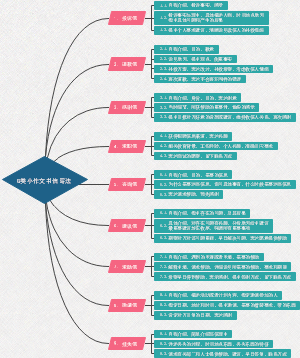导图社区 Chapter 2 First Language Acquisition_
- 47
- 0
- 0
- 举报
Chapter 2 First Language Acquisition_
Chapter 2 First Language Acquisition,希望这份脑图会对你有所帮助。
编辑于2023-05-18 17:18:02 山西- 语言学
- 相似推荐
- 大纲
Chapter 2 First Language Acquisition
一、Theories of First Language Acquisition
1 儿童语言习得的阶段
small baby
At the end of the first year
18m
Age 3
School age
Two polarized positions
The extreme behaviorist position 极度的行为主义
Tabula Rasa 白板说 定义
The extreme construction position 极度的建构主义
二、Behavioristic Approaches
1 Behavioristic Approaches (B.F.Skinnier) 定义
The behavioristic approach focuses on the immediately perceptible aspects of linguistic behavior and the relationships or associations between those responses and events in the world surrounding them.
2 Operant conditioning(操作制约) 定义
It refers to conditioning in which the organism emits a response,or operant without Necessarily observable stimuli;That operate is maintained by reinforcement.According to Skinner,verbal behavior, like other behavior is controlled by its consequence.
3 Mediation theory(调节理论)Jenkins and Palermo 定义
In an attempt to broaden the base of behavioristic theory, some psychologists proposed mediation theory. In mediation theory, meaning was accounted for by the claim that the linguistic stimulus (a word or sentences) elicits a " mediating" response that is self-stimulating.
三、The Nativist Approach
The nativist Approach/Innateness Hypotheses
The term nativist is derived from the fundamental assertion that language acquisition is innately determined, that we are born with a built-in device of some kind that predisposes us to language acquisition - to a systematic perception of language around us, resulting in the construction of an internalized system of language.
LAD(language acquisition device)
Chomsky : " little black box ” ,Chomsky (1965) claimed the existence of innate properties of language to explain the child's mastery of his native language in such a short time despite the highly abstract Chomsky (1965)nature of the rules of language.
McNiell : properties 4
特征: I) the ability to distinguish speech sounds from other sounds in the cnvironment, 2) the ability to organize Iinguistic events into various classes which can later be refined, 3) knowledge that only a certain kind of linguistic system is possible and that other kinds are not , 4) the ability to engage in constant evaluation of the developing linguistic system so as to construct the simplest possible system out of the linguistic data that are encountered.
Universal Grammar (UG)
Positing that all human beings are genetically equipped with language-specific abilities, researchers are now expanding the LAD notion into a system of universal linguistic rules which has come to be known as Universal Grammar (UG). UG research is attempting to discover what it is that all children, regardless of their environmental stimuli(the language(s) they hear around them) bring to the language acquisition process.
Systemic 每个阶段都有体系
Pivot Grammars 中枢语法 (4)
(1)The early grammars of child were referred to as pivot grammars. (2)It was commonly observed that the child’s first-two utterances seemed to manifest two separated word classes. The first class of words was called pivot, since they could pivot around a number of words in the second, open class. (3) For example, my cap, that horsie. (4)Thus the first rule ofthe generative grammar of the child was described as follows: Sentence-> Pivot Word + Open Word.
Connectionism
四、Functional Approaches
1、背景: Meaning, function
2、代表人物
Jean Piaget: environment
Lois Bloom: learn to talk: nature &interaction
Dan Slobin: two major pacesetters
Functional: conceptual &communicative capacities;cognition
Formal: perceptual& information-processing capacities;Grammar.
语言习得的三大流派
五、Competence and Performance
Competence 定义:Competence refers to one's underlying knowledge of a system, event, or fact. It is the non- observable ability to do something, to perform something.
Performance 定义 :Performance is the overtly observable and concrete manifestation or realization of competence. It is the actual doing of something: walking, singing, dancing, speaking.
六、Comprehension and Production
Comprehension 不等于competence ;Performance不等于production;Production是competence的一部分 Comprehension refers to listening and reading production refers to speaking and writing.
七、Nature or Nurture
Chomsky contended that the child is born with an innate knowledge of or predisposition toward language, and that this innate property (the LAD or UG) is universal in all human beings. But the innateness hypothesis presented a number of problems itself.
八、Universals
语言是以相同方式习得的 Closely related to the innateness controversy is the claim that language is universally required in the same manner manner
九、Systematicity and Variability
Indeed, most of the data gathered so far point to the systematic nature of the learning process. From pivot grammar to three-and four-word utterances and to full sentences of almost indeterminate length, children exhibit a remarkable ability to infer the phonological, structural, lexical, and semantic system of language. But in the midst of all this systematicity, there is an equally remarkable amount of variability in the process of learning. Even after acquisition has been more or less completed, the native language of adults is full of variability.
十、Language and Thought
Surface-structure imitation : phonological code & the deep structure of language: semantic code
十一、Imitation
Surface-structure imitation: phonological code
Deep structure: semantica de
十二、Practice
Rote & meaning
十三、Input
Children react very consistently to thee deep structure and the communicative function of language
十四、Discourse
take place,interaction,rather than export,is the required. It is now clear that in order for successful first language acquisition to
Ten Topics
十五、In the classroom: The direct method
定义 It is a method of foreign or second language teaching which insists that only the target language should be used in the class and meanings should be communicated directly associating speech form with action, gestures and situations. It emphasizes the importance of the spoken language, therefore holds that reading and writing be taught after speaking.
特点(8)
Exclusively in the target language
Everyday vocabulary
Oral communication skill
Inductively
Question-and-answer exchanges
Speech and listening
Correct pronunciation
Orally









